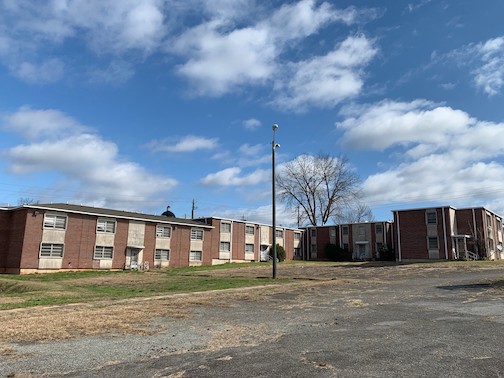The ABCDs of Multifamily Classification
People invest for all sorts of reasons, but when looking at a multifamily investment, there are many factors to consider. One of the most significant factors to consider is your risk tolerance.
Multifamily syndicators invest in property “classes” that come with varying levels of risks and potential returns.
The intent of this article is twofold:
- Define the different types of multifamily asset classes
- Detail the various risk and return characteristics of each
When evaluating multifamily investments, it’s essential to understand the different classifications of properties and the characteristics that distinguish them. In real estate, multifamily properties are usually divided into four classes: A, B, C, and D.
Overview of the Different Classes

Class A Characteristics
Multifamily Properties Class A properties are the newest and most luxurious multifamily buildings on the market.
- Built within the last 7-10 years
- Great location
- Excellent amenities (pool, fitness center, business center, clubhouse, pet amenities, etc.)
- Modern, high-end finishes and appliances and well-maintained
- No deferred maintenance
- Renters of Class A properties are typically willing to pay a premium for the high-end living experience

Class B Characteristics
Class B properties are older than Class A but are still well-maintained and offer tenants a good quality of life.
- These properties may not have the same level of amenities and finishes as Class A properties. However, they are still in good condition and provide a decent living experience for renters.
- Built between 10-30 years ago
- Good location with strong demographics and economic drivers
- Interior units could use updates
- Not as many or as excellent amenities as Class A
- Moderate rents
Class C Characteristics
Class C properties are older, lower-end multifamily buildings that have not been well-maintained over the years but provide the opportunity to add value.
- Garden style (four floors or less)
- Built before the 1980s
- Interiors dated
- Little to no amenities
- Smaller units (typically)
- Deferred maintenance
- Low rents
- The area may not have as nice schools and economic drivers

Class D Characteristics
Class D properties are the lowest class of multifamily buildings and are usually in poor or distressed condition.
- High vacancy
- In need of major repairs/renovations (deferred maintenance, aka “heavy lift”)
- High crime in or around the property
- Low rental rates
- Weak demographic and economic indicators (decreasing population/no job growth)
Why does this matter to you?
Like any investment, investing in multifamily comes with some level of risk. Multifamily syndicators will invest in properties from A to D classes that all come with varying risks and returns. Understanding what they are is a crucial step in deciding what investments you choose and your risk tolerance.
For example, if you were interested in wealth preservation and wanted smaller returns that were almost guaranteed, then a class-A multifamily investment might be best suited for you. That is because Class A is typically stabilized (unless you are investing in development or pre-stabilization) and has many positive characteristics that make it a safer investment. However, the downside to Class A properties is that they are newer and require little to no renovations, which means that there is not much of a value-add component relative to the lower classes.
Conversely, if you are interested in potential higher equity and cash returns, you could invest in Class D multifamily syndication on the other side of the spectrum. However, these come with higher risks because they are generally run down, mismanaged, in a lousy location, have a higher vacancy rate, and many more reasons that come with higher risks than a Class A syndication.
Regardless of what class of multifamily you invest in, you must properly vet your syndicator, the business plan, and the location. So ask yourself a couple of questions first:
- Does your syndicator have a track record of success in these types of assets?
- What is the business plan, and does it make sense for the location/property?
- Is the location in the path of progress?
Investing in these properties can be very labor-intensive for the operator and the investor. However, investing in Class B or C assets can be a better choice for your risk profile if you are looking for aspects of capital preservation with some appreciation upside.
That is because these asset classes typically have some value-add component, which, when paired with the right operator, can provide a good cash-on-cash return while producing a high equity return on the sale of the property. They also are in good areas with favorable demographics and economic drivers.
Nevertheless, as an investor, you still need to do your due diligence and understand the business plan and whether it makes sense for the property class. For example, suppose the market does not support high-end finishes such as granite and stainless-steel appliances, but the operator wants to implement that strategy. In that case, the forecasted returns (or proforma) will unlikely be met because they will over-renovate and spend too much money.
If you want to learn more about how to start passively investing in multifamily and properly vet an operator check out our free guide here.
CONCLUSION
“The ultimate authority must always rest with the individual’s own reason and critical analysis.” – Dalai Lama
Class A, B, C, and D assets have varying and distinguishable characteristics. Although the line may blur between specific properties and how they should be classified, this article provides some ways to identify them and things to consider before investing in one of them.
Investing in multifamily properties requires a considerable amount of time and effort upfront. However, if done correctly, it can be an excellent source of passive income for retirement, producing generational wealth, or diversifying your portfolio. Understanding the aspects of the investment, such as the different classes, is essential to ensure it aligns with your risk tolerance and investment objectives.
